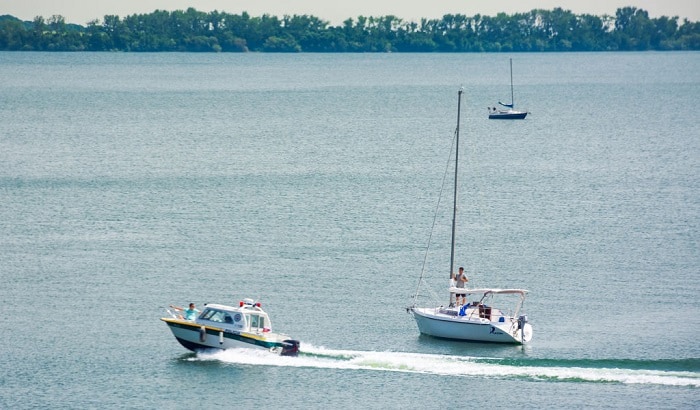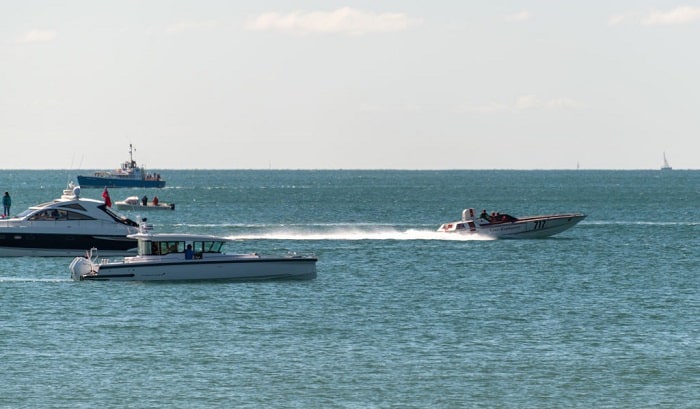You may have come across the question: if another boat signals their intention to pass you from astern, what should you do? Well, it depends on which side it’s coming from. Seeking confirmation from other vessels is usually done through a blast of a horn.
One blast is released when they choose the starboard side, while it is a tow blast for passing on the port. You have to return a blast or horn signal to let them know that you recognize their intentions. Know every important detail as you continue reading.
Table of Contents
The law urges every vessel to manifest its course of action for the prevention of accidents in waters. There are specifications with the required signals based on the sizes of the vessel as well.
Vessels that are below 39.4 feet long
A device that can create efficient sound is a must for these vessels. Generally, a whistle, air horn, or bell is utilized. They are the appropriate tools, although you may take the notion of using pans and pots to make a sound.
Vessels that are 39.4 feet and less than 65.6 feet long
These vessels need a whistle and bell. The whistle is audible for about half a nautical mile. To make this happen, choose a bell with a diameter of at least 7.87 inches. The ones produced by Nagina and RedSkyTrader meet this requirement.
The Right Way and Timing for the Signal
You have to make the signal when seeing another vessel from half a mile away. It must not be released in foggy areas as there are appropriate tools for it. The short blast usually lasts for a second, while the prolonged one is for four to six seconds.
Response to Signals of Other Vessels When Meeting or Crossing
- One short blast = I leave you on my port side
- Two short blasts = I leave you on my starboard side
- Three short blasts = I’m running astern propulsion
When the other vessel recognizes your signal, the same response is given to show agreement. If the suggested maneuver poses danger, five rapid or short blasts should be delivered.
Here are the specifics:
Head-on Situation
When meeting head one or almost to it, a short blast should show the intention of either of the vessels. The other boat must answer promptly. Both of them should place their course on the starboard to pass through the port on each side.
Crossing Situation
When meeting the other boat on the starboard side, you have to refrain from crossing ahead of it. As a give-way vessel, take action to make the way clear for the other craft as you hold the course and speed.
The stand-on vessel should not waste any time maneuvering when it shows that the other boat is not taking any action.
Overtaking Situation
When two vessels are moving in a similar direction, the boat that intends to pass astern on the starboard side should let out one short blast. The other boat should respond in the same way if there is a safe course.
If the intention is passing on the port side, two short blasts are the proper signals. If there’s no risk, the other boat should respond in the same way. Five or more rapid blasts are the right response when it’s not safe to take action.
Conclusion
Now, you know if another boat signals their intention to pass you from astern, what should you do? The answers to this question discussed in this article shouldn’t be taken for granted. You have to be alert with the signals from the boats that you meet. Moreover, you have to be responsible for responding correctly. In this way, collisions and unfortunate events won’t happen.

“I am James Harvey – founder of Boating Basics Online. It is established with the drive to help out first-time boaters, which are those desiring to explore their way through the water. So if you are new to boating, start from here with me. “


